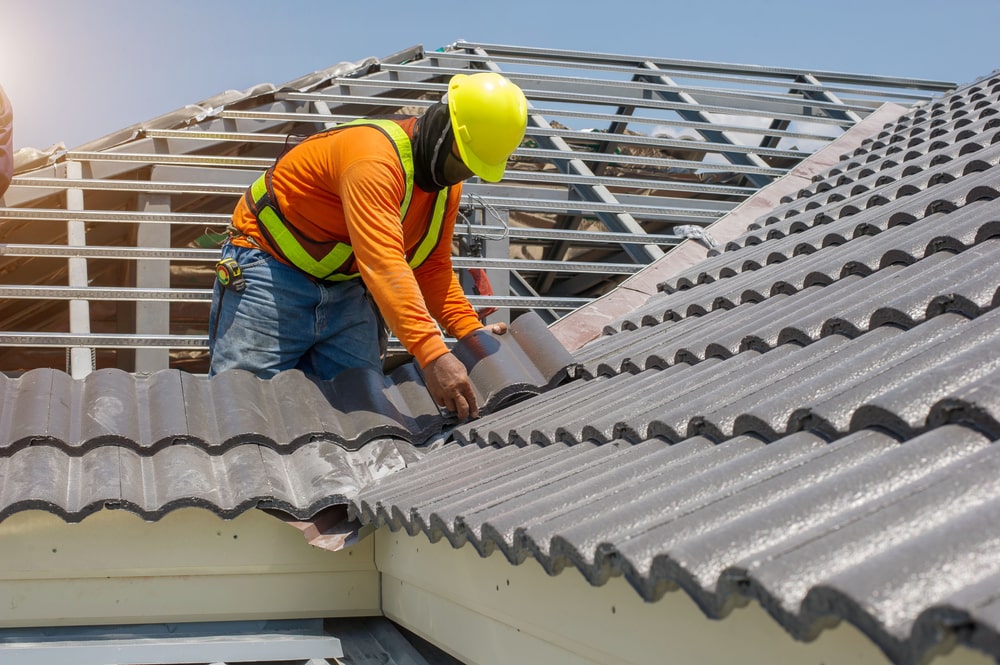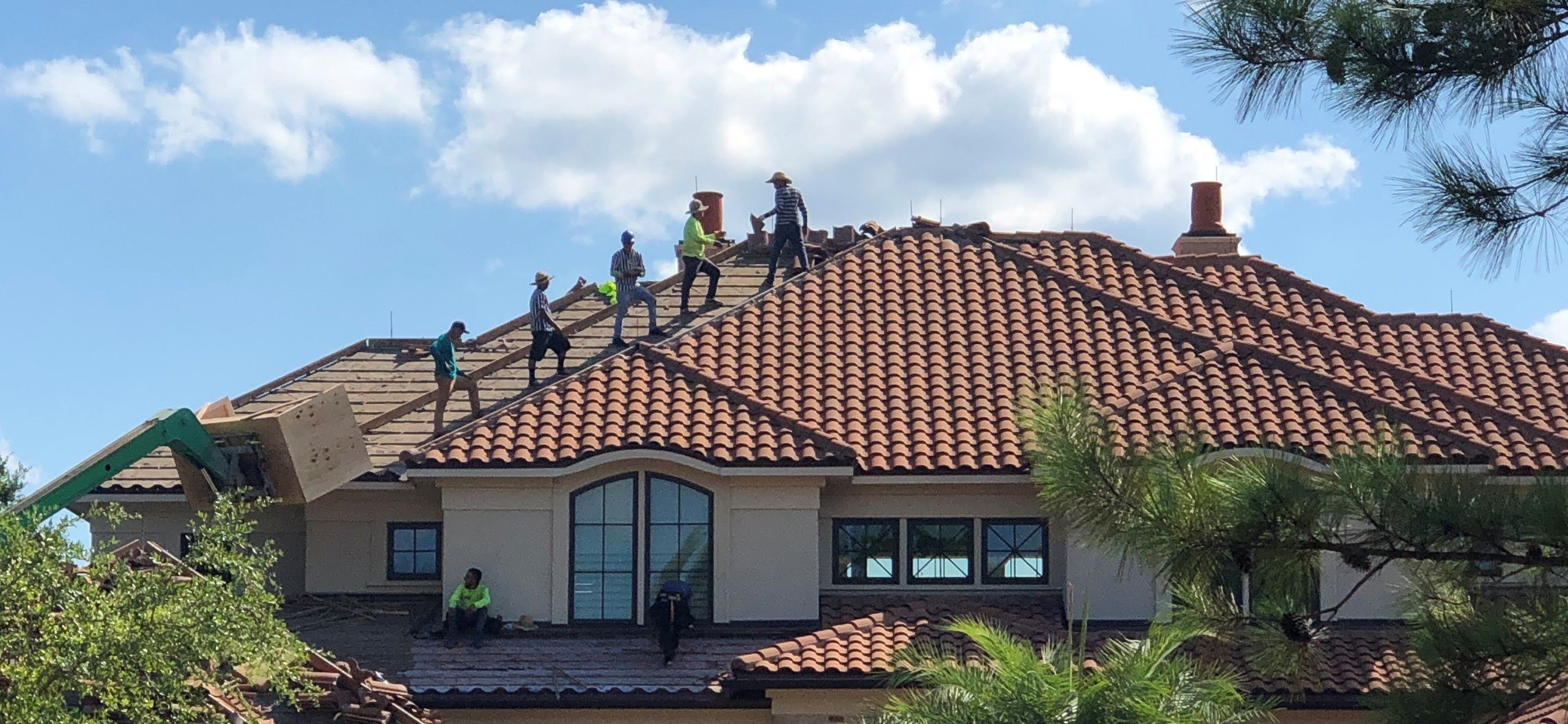A Comprehensive Check Out Roofing Companies Gainesville Locals Recommend
Finest Practices for Ensuring Correct Roofing Air Flow
A balanced intake and exhaust air vent proportion, frequently 1:300, plays a critical role, with intake vents preferably positioned at the reduced edge of the roofing system for great air entry and exhaust vents at the height for cozy air departure. Keeping insulation away from vents is vital to stop airflow constraint.
Understand Ventilation Fundamentals
Effectively comprehending ventilation essentials is essential for making sure the durability and performance of roofing systems. Efficient air flow alleviates wetness accumulation and temperature level extremes in the attic room, both of which can cause considerable structural damages gradually. A well-ventilated roofing aids in avoiding typical concerns such as mold and mildew growth, wood rot, and ice dams, which can endanger the honesty of the roof materials and the underlying frameworks.
The main goal of ventilation is to help with the motion of air, allowing for a constant exchange in between the outside and interior environments. This balance is accomplished via a mix of intake and exhaust vents that interact to preserve optimal air movement. Consumption vents, commonly located along the eaves or soffits, enable fresh air to get in the attic room room, while exhaust vents, commonly located at or near the roofing system ridge, allow hot, moist air to run away.
Key variables influencing the effectiveness of roofing system air flow consist of appropriate positioning, sufficient sizing, and making sure that both consumption and exhaust vents are unobstructed. Routine assessment and upkeep are important to recognize potential obstructions, damage, or ineffectiveness in the air flow system, consequently guarding the roofing system's performance and sturdiness.
Sorts Of Roof Covering Vents
Roof vents play a crucial duty in preserving reliable attic room ventilation and, by expansion, the overall health and wellness of the roof. Numerous kinds of roofing vents are available, each with distinct advantages tailored to specific roof covering needs. Ridge vents, for example, are mounted along the roofing's top, enabling cozy, moist air to escape from the attic. They offer continuous air flow and mix effortlessly with the roofline, making them both effective and cosmetically pleasing.

Soffit vents are mounted under the eaves and job in tandem with roofing system vents to ensure a well balanced intake and exhaust system. By allowing cooler air to go into from below, soffit vents assist in the expulsion of hot air via top vents. Gable vents, located on the outside walls of the attic room, offer one more effective option, especially in homes with gable roofings.
Evaluate Your Present Ventilation

Following, think about the age and problem of your roofing materials and air flow parts. Older systems might not abide with current building ordinance or may have deteriorated gradually, reducing their efficiency. Conduct an extensive examination to identify any type of indications of deterioration, such as corrosion, damages, or gaps that can compromise the system's efficiency.
In addition, gauge the attic room temperature visit their website and moisture levels. High temperatures and humidity can show inadequate ventilation.
Installation Best Practices
Reliable installation of roofing ventilation systems is critical for ensuring optimal efficiency and long life. Proper setup begins with understanding the particular air flow demands of the structure and the roof covering it covers. This involves determining the proper ratio of consumption to tire vents, usually sticking to the 1:300 rule, which specifies one square foot of air flow for every 300 square feet of attic room floor area.

The positioning of vents is similarly essential. Intake vents ought to be installed at the roofing system's reduced edge, usually in the soffits, to enable awesome air to enter. Exhaust vents, on the various other hand, should be mounted near or at the roof covering's height to help with the exit of cozy, moist air. This creates a natural airflow that aids keep temperature level and dampness balance within the attic room space.
Seal all vent links thoroughly to stop air leakages and prospective water seepage. Usage high-grade products and adhere to producer guidelines to make sure durability and performance. Additionally, integrating ridge vents with baffles can dramatically enhance airflow performance by protecting against wind-driven rainfall and snow from getting in the attic.
Eventually, precise setup of roof covering ventilation systems minimizes potential concerns such as mold development, ice dams, and architectural damage, making sure the roof covering's stability and the structure's general wellness.
Regular Maintenance Tips
Consistency in maintenance methods is basic to guaranteeing the long-lasting performance of roof air flow systems. Regular inspections are essential, ideally performed biannually-- in the spring and fall. During these examinations, make certain that vents are devoid of particles, nests, and other special info blockages that can hamper air flow. Examine for any signs of wetness accumulation or mold and mildew, as these can indicate improper ventilation or leakages (gainesville roofing companies).
Utilize a soft brush or a vacuum cleaner to remove dirt and particles from intake and exhaust vents. Be mindful not to damage the air vent displays or louvers during the procedure.
Correct insulation is similarly essential. Make certain that attic insulation does not block the vents, as this can badly restrict airflow. If any type of insulation has actually changed or resolved, reposition or replace it to preserve an effective obstacle.
Lastly, change any type of damaged or missing components immediately. Busted vents, fractured tiles, or scrubby blinking can all contribute to insufficient air flow and must be resolved without hold-up. Routine maintenance guarantees that the roof air flow system operates ideally, consequently extending the life expectancy of the roofing system itself.
Conclusion
Guaranteeing appropriate roofing ventilation is critical for preserving the effectiveness and sturdiness of a roofing system. Adherence to the 1:300 consumption and exhaust air vent proportion, combined with the tactical placement of vents, is crucial.
A well balanced intake and exhaust vent proportion, frequently 1:300, plays a crucial role, with consumption vents preferably placed at the lower edge of the roof for trendy air entrance and exhaust vents at the peak for warm air leave. Intake vents, generally located along the soffits or eaves, permit fresh air to go into the attic room area, while exhaust vents, often located at or near the roof covering ridge, make it possible for warm, moist air to get away.
Soffit vents are installed under the eaves and work in tandem with roofing system vents to guarantee a balanced intake and exhaust system. By permitting cooler air to enter from below, soffit vents facilitate the expulsion of warm air via top vents. Adherence to the 1:300 consumption and exhaust air vent ratio, coupled with the strategic placement of vents, is crucial.